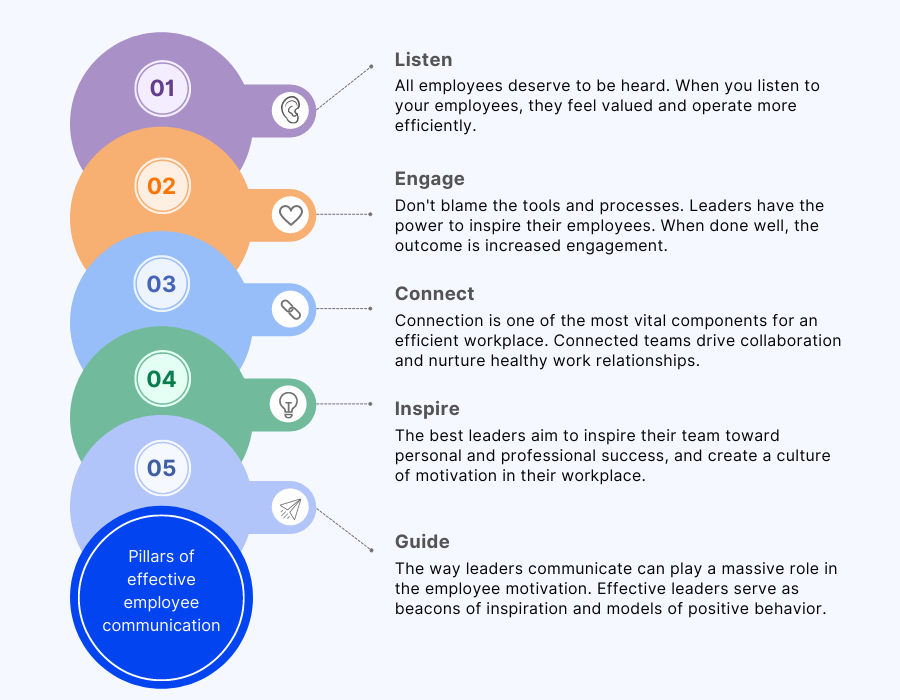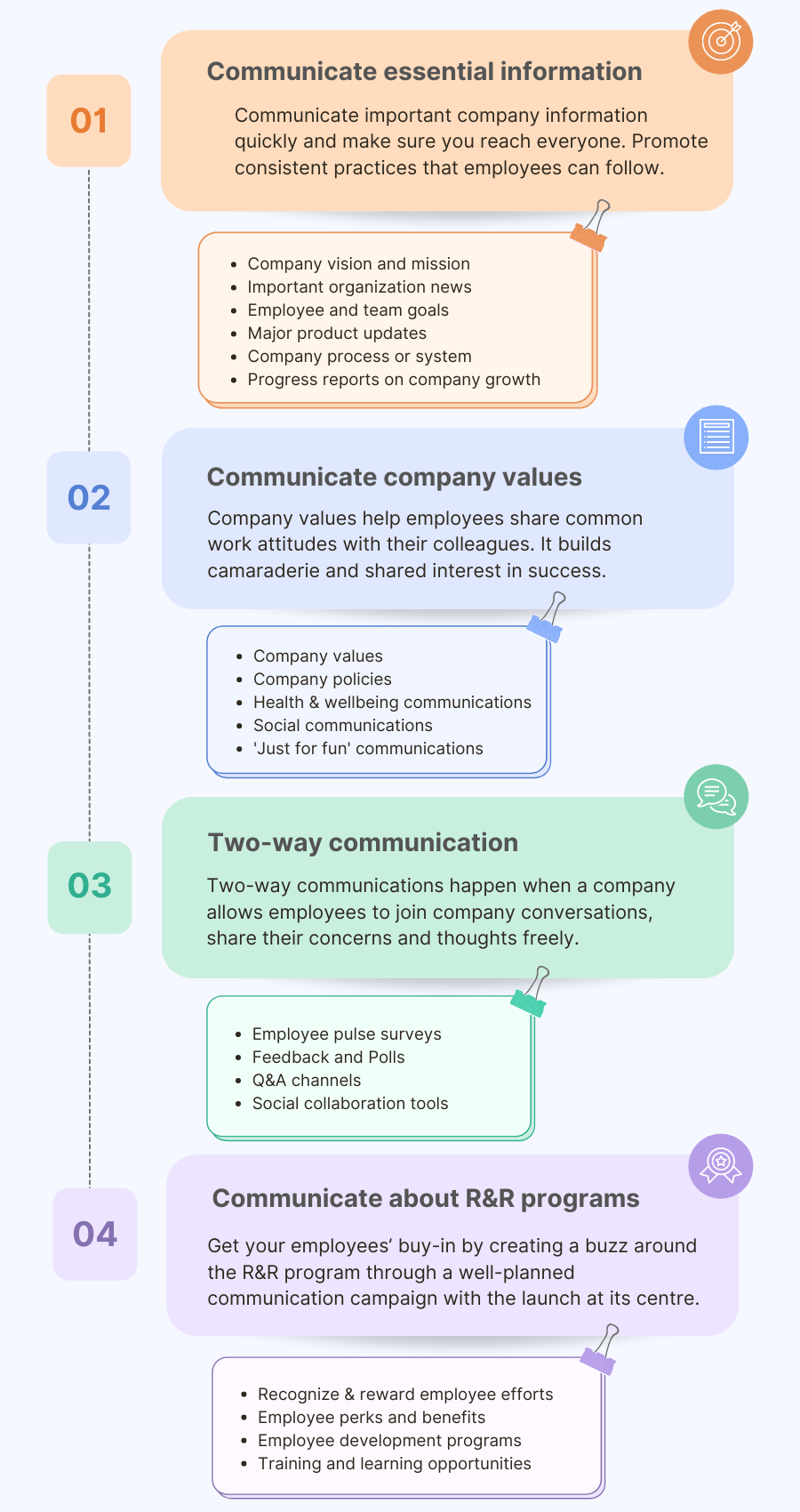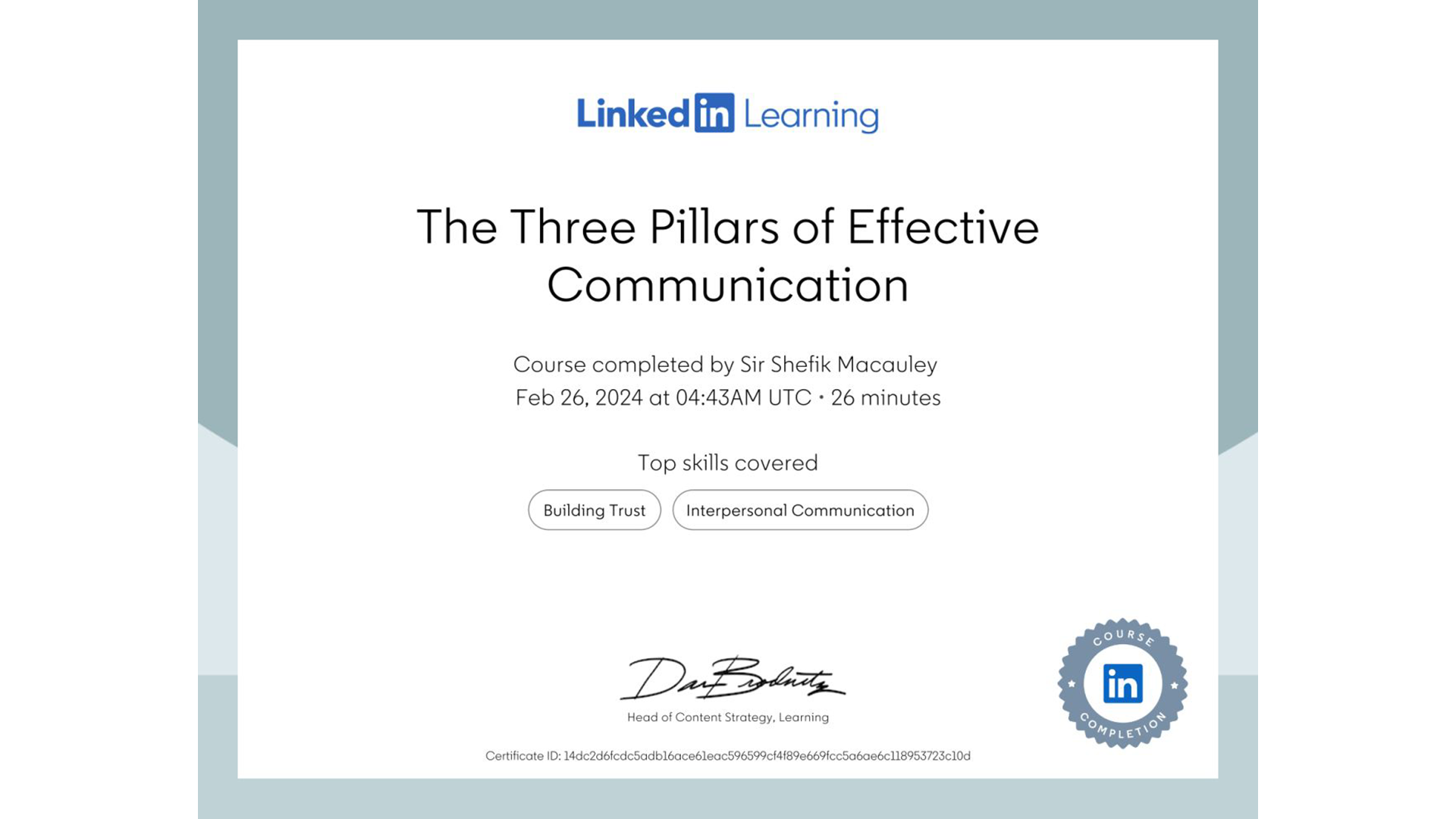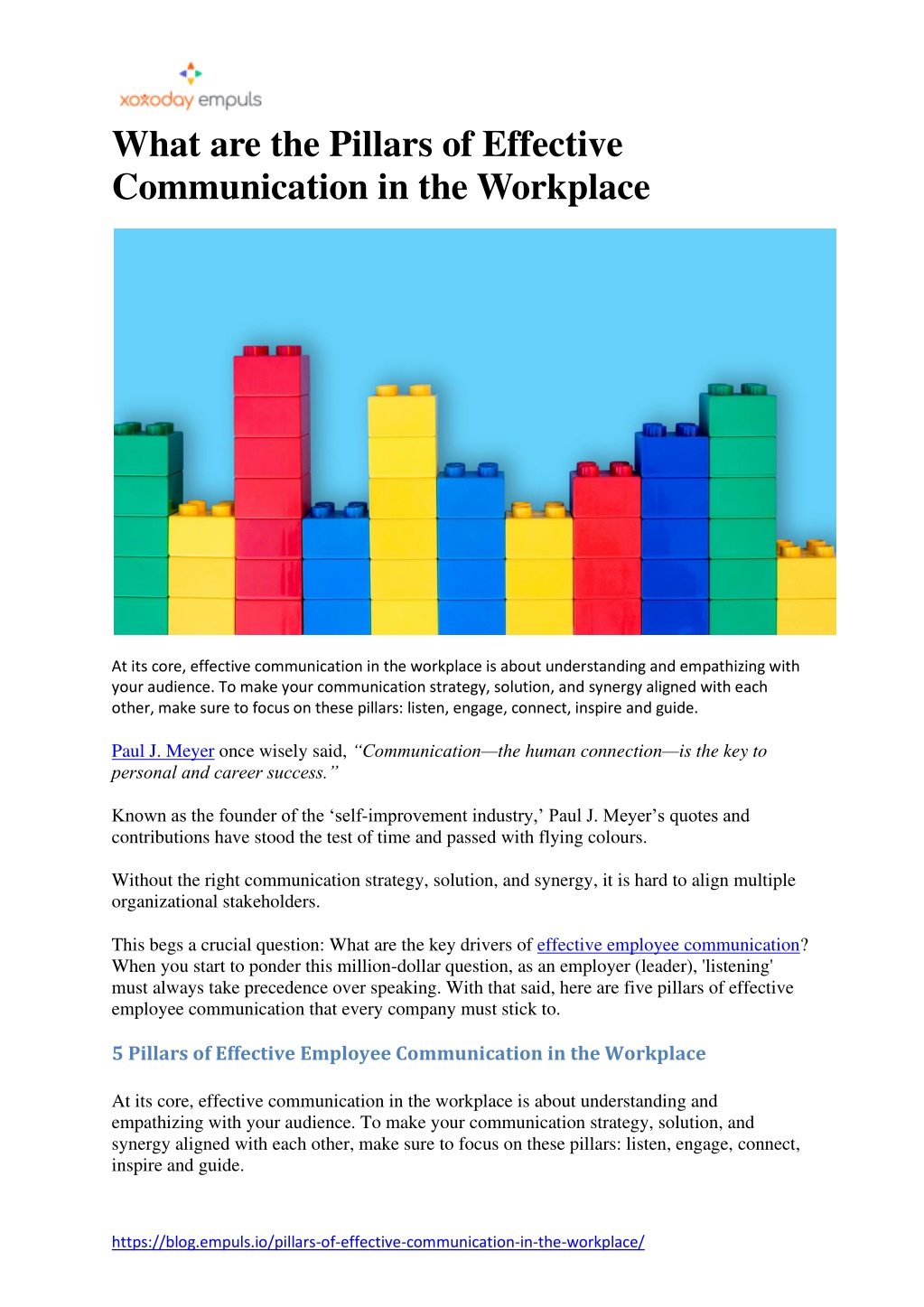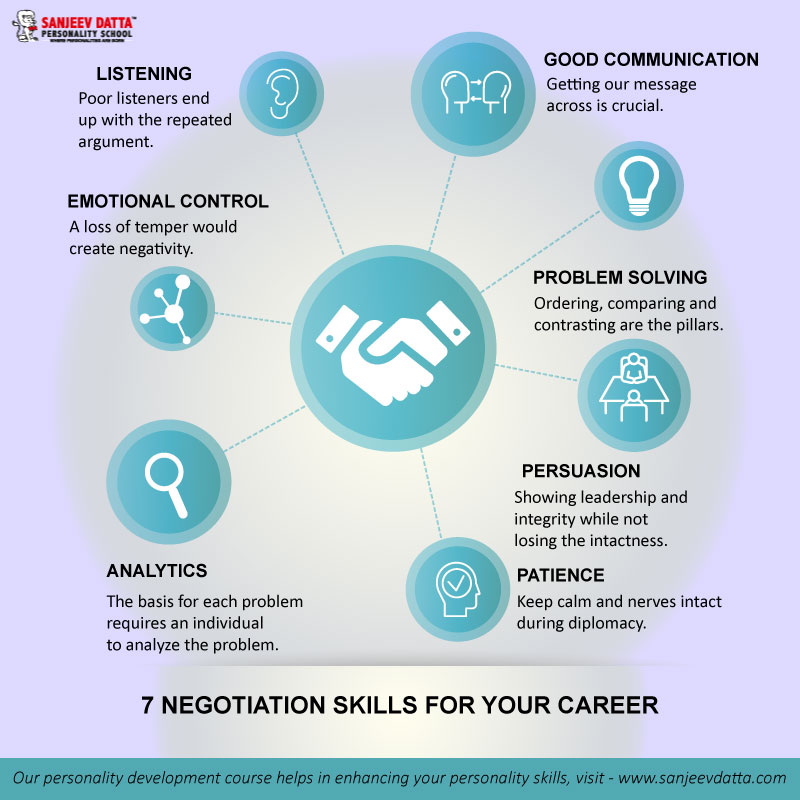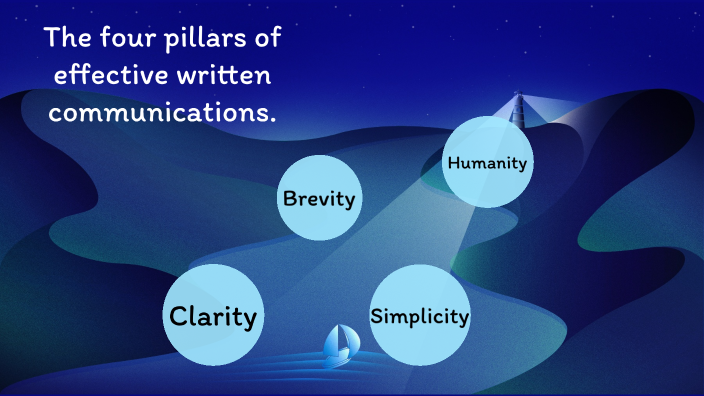Linkedin The Three Pillars Of Effective Communication

Imagine a bustling town square, ideas swirling like leaves in the autumn wind. People from all walks of life are engaged in lively discussions, some nodding in agreement, others raising thoughtful questions. But what truly makes these interactions meaningful, what transforms them from mere noise into genuine connection? The answer, according to LinkedIn's experts, lies in mastering the art of effective communication, built upon three fundamental pillars.
At its core, effective communication isn't just about talking; it's about being understood. LinkedIn has identified three crucial elements that underpin successful communication: Clarity, Conciseness, and Empathy. Mastering these three pillars can unlock better collaboration, stronger relationships, and ultimately, greater success in both professional and personal spheres.
The Foundation: Understanding the Need
Before diving into the specifics, it’s important to understand why these three pillars matter so much, particularly in today's fast-paced, digitally driven world. The modern workplace is often characterized by information overload and constant distractions. This makes it more critical than ever to communicate with precision and purpose.
According to a 2023 study by McKinsey, poor communication can lead to significant project delays and increased costs. This highlights the tangible impact of communication skills on organizational performance. Furthermore, Gallup reports that companies with highly engaged employees outperform their peers by 23%. Effective communication is a key driver of employee engagement.
Pillar 1: Clarity - The Power of Precision
Clarity is the bedrock of effective communication. It ensures that your message is easily understood, leaving no room for ambiguity or misinterpretation. It's about painting a clear picture with your words, using language that is accessible to your audience.
LinkedIn Learning offers numerous courses on improving clarity in communication, emphasizing the importance of using specific language and avoiding jargon. Consider the difference between saying "We need to improve our synergy" and "We need to work together more effectively to achieve our shared goals." The latter is undeniably clearer. Another way to achieve clarity is to define key terms.
Ask yourself, "What assumptions am I making about my audience's knowledge?" Eliminating jargon is crucial. For example, Instead of saying "Let's leverage our core competencies," try "Let's use our strengths to our advantage."
Pillar 2: Conciseness - Getting to the Point
In an era of endless emails and constant notifications, conciseness is a virtue. It's about conveying your message efficiently, respecting your audience's time and attention. Every word should serve a purpose, contributing to the overall understanding of your message.
LinkedIn's research indicates that people are more likely to engage with content that is brief and to the point. This is reflected in the popularity of short-form video content and concise written updates. Practicing active editing is essential for conciseness.
One technique is to identify and eliminate unnecessary words and phrases. Replace "due to the fact that" with "because," and "in order to" with "to." Remember, being concise doesn't mean sacrificing clarity.
Pillar 3: Empathy - Connecting on a Human Level
Empathy is the ability to understand and share the feelings of another. It's about considering your audience's perspective, their needs, and their emotions. It allows you to tailor your message to resonate with them on a deeper level.
LinkedIn emphasizes the importance of empathy in building strong professional relationships. This involves actively listening to others, acknowledging their viewpoints, and responding with compassion. When you demonstrate empathy, you create a safe and supportive environment for communication.
Actively listening requires focus and genuine interest. Pay attention to both verbal and nonverbal cues, and ask clarifying questions to ensure you understand their perspective. Imagine you're giving feedback to a colleague. Instead of simply stating what they did wrong, try framing your feedback in a way that acknowledges their effort and offers constructive suggestions for improvement.
Putting the Pillars into Practice
These three pillars are not isolated concepts; they are interconnected and interdependent. Effective communication requires a harmonious blend of clarity, conciseness, and empathy. Consider a scenario where you need to deliver bad news to a team. Using clear and concise language, you can explain the situation without ambiguity.
However, if you deliver the message without empathy, you risk alienating your team and damaging morale. By acknowledging their disappointment and offering support, you can mitigate the negative impact and maintain a positive working relationship. Practicing all three pillars will allow you to navigate these situations with more grace and effectiveness.
LinkedIn provides various resources to help individuals and organizations improve their communication skills. These include online courses, workshops, and articles that offer practical tips and strategies. Many of these resources emphasize the importance of self-awareness and continuous improvement.
Common Pitfalls and How to Avoid Them
Even with a strong understanding of the three pillars, it's easy to fall into common communication traps. One common mistake is assuming that everyone shares your level of knowledge or understanding. Always tailor your message to your audience, providing necessary context and definitions.
Another pitfall is neglecting to listen actively. If you're too focused on formulating your response, you'll miss important cues and signals from the speaker. Resist the urge to interrupt or offer unsolicited advice. Other common errors are using passive aggressive tones or being too vague.
Finally, avoid using a one-size-fits-all approach to communication. Different situations and different audiences require different communication styles. Learning to adapt your communication style to suit the context is a key skill for effective communicators.
The Long-Term Benefits
Investing in communication skills yields significant long-term benefits. Organizations with strong communication practices experience higher levels of productivity, innovation, and employee satisfaction. Individuals who communicate effectively are more likely to build strong relationships, advance their careers, and achieve their goals.
According to a Harvard Business Review article, leaders who excel at communication are more likely to inspire and motivate their teams. This highlights the crucial role of communication in leadership development. Furthermore, effective communication can reduce conflict and improve collaboration, leading to more harmonious and productive work environments.
A Continuous Journey
Mastering the three pillars of effective communication is not a one-time achievement; it's a continuous journey of learning and refinement. By consciously practicing clarity, conciseness, and empathy, you can transform your interactions and build stronger, more meaningful relationships. Consider this as a journey.
The ability to communicate effectively is a powerful asset that can unlock endless possibilities. As the world becomes increasingly interconnected, the need for skilled communicators will only continue to grow. Embrace the challenge and embark on the path to becoming a more effective and impactful communicator. Communication will become increasingly important to connect with others.
